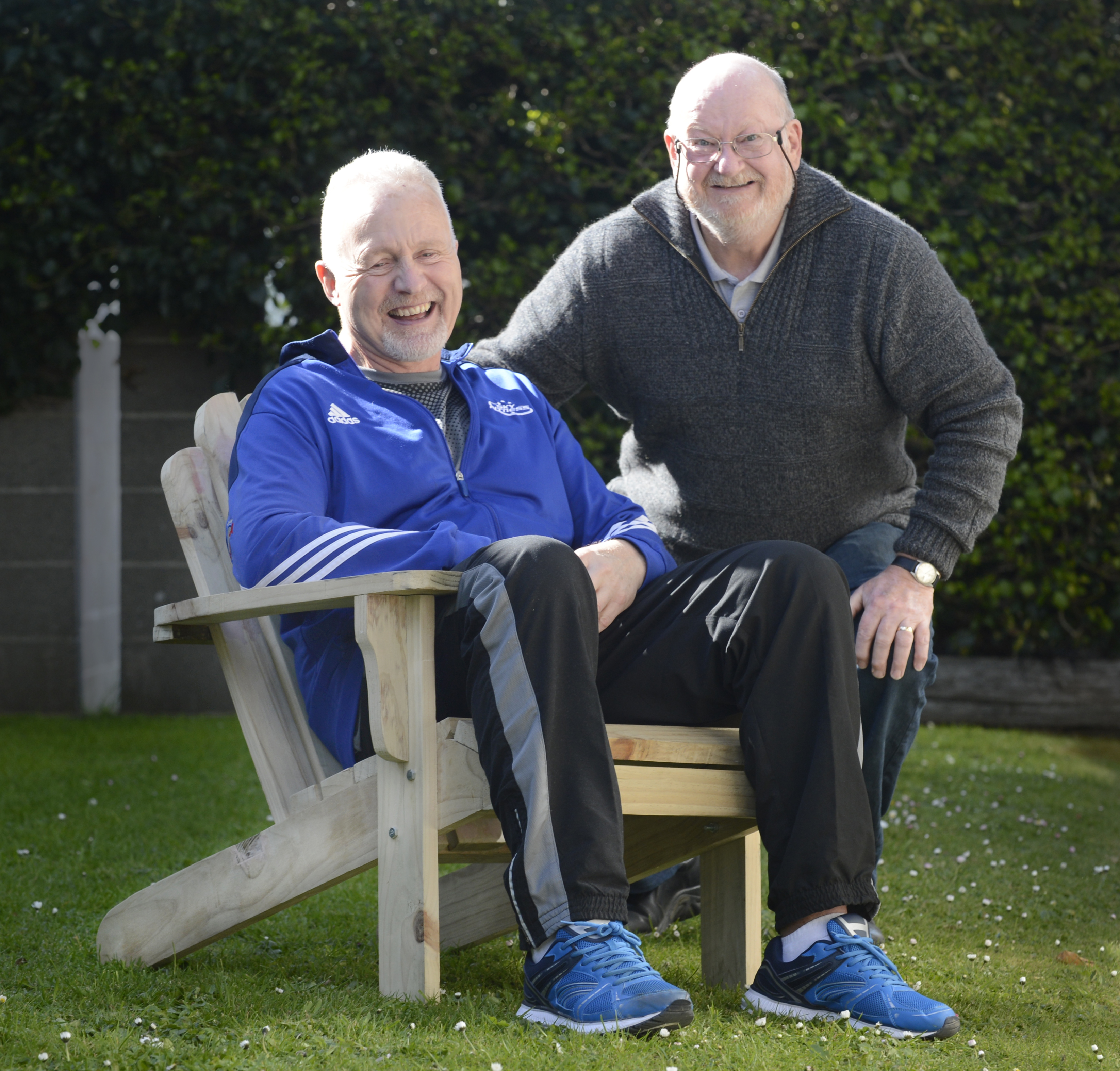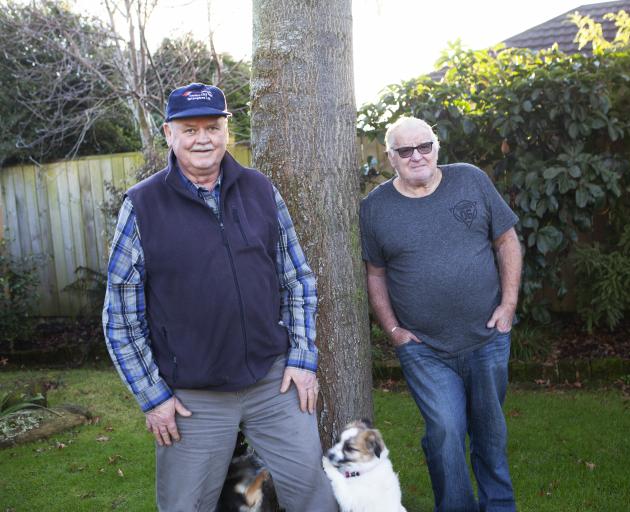
Dave Griffin and Roy Robertson have built a chair.
A well-constructed but ordinary enough looking chair.
A chair that will be on display in an art exhibition.

The art of craft, the craft of living, living with stroke.
All three will be abundantly, but briefly, on display in Champions of Stroke at the Dunedin Community Gallery next weekend.
Dave and his wife Brenda first talked about staging this exhibition during the months after he had a stroke in December, 2012.
A carpentry tutor at the Milton prison, Dave had passed his six monthly health check-up with flying colours. Just hours later, he had a massive stroke.
The Stroke Foundation says a stroke is a sudden interruption of blood flow to part of the brain causing it to stop working, eventually damaging brain cells. A stroke is often caused by a blood clot or a burst blood vessel.
"The prognosis was palliative care," Brenda recalls.
"But he dug in and worked extremely hard."
Three months after the stroke, he could shuffle along like a much older man.
With intensive physical, cognitive and speech therapy, he has regained about 80% of his original capacity.
"He's still Dave," Brenda says.
"He's not quite what he was. But it's much better than it could have been."
Having, recovering and living with the aftermath of a stroke is difficult, Brenda says.
Despite so many people having strokes, there is a stigma that often leaves those affected isolated and invisible.
"After two years of intensive therapy, we hadn't met anyone else. If we had, it would have made the journey a lot easier."
Brenda and Dave wanted to do something to raise awareness of strokes and also showcase the accomplishments of those rebuilding their lives after a stroke.
"We need to be aware these people are in the community.
"They have a lot of good qualities, but often fear to take the first step.
"Our aim is to support and encourage that, while life has certainly changed and is completely different with different challenges, the new life can be just as good and as rewarding."
Champions of Stroke is the result.
The exhibition is comprised of photographs of, brief biographies about and art and craft works by stroke survivors.

The art and craft pieces include paintings, furniture, material art and embroidery.
"We can show that people who have had a stroke are getting on with their lives and contributing to social, community and family wellbeing.
"We've got together a great group of people to make this happen.
"This is the first. But I would love to take it nationwide."
The 30 photographs are colour portraits of Otago people who have had strokes. The photographer is Chris Hay, of the University of Otago's School of Physiotherapy.
Those photographed include John Buchanan and Russell Burgess, both of Mosgiel.
John was on holiday in Christchurch, in 2006, when a carotid artery became blocked, causing a stroke.
John says it was hard having to rely on his wife for many things he used to be able to do.
"I lost my licence, so I lost my independence and my self-confidence."
For several years, he worked as a night watchman at Dunedin Airport, but gave that up about three years ago.
Ruby, his Jack Russell terrier, is a constant companion.
"She's made a big difference ... If I'm down, she's always there."
Russell was in the middle of major heart surgery, in 2014, when his stroked occurred.
A former professional driver, he no longer enjoys being behind the wheel.
"It's easy to get quite depressed and anxious about it."
Twice a week, John and Russell, who also has a dog, a Shih Tzu-cross named Lily, meet up.
"[The dogs] have a good time together while we yarn about old times."
Dave has also been meeting up with someone on a regular basis. He was "buddied-up" with Stroke Foundation volunteer Roy Robertson.
Buddied up, to build things.
Dave has the know-how. Roy has the able body.
Between the two of them, they have constructed several pieces of furniture.
"Dave used to get his charges [at Milton prison] to make these," Roy says, pointing to an unpainted, wooden, Cape Cod chair.
Along the way, despite Dave's limited speech, they have become friends.
"He's stubborn ... a nice guy and a ratbag," Roy says with a laugh.
"I'm just amazed. He could lie in bed all day, but he's got a spark. He likes to do things."
The exhibition
Champions of Stroke is on at the Dunedin Community Gallery, 20 Princes St, Saturday, October 6, to Tuesday, October 9, 10am-3pm.












